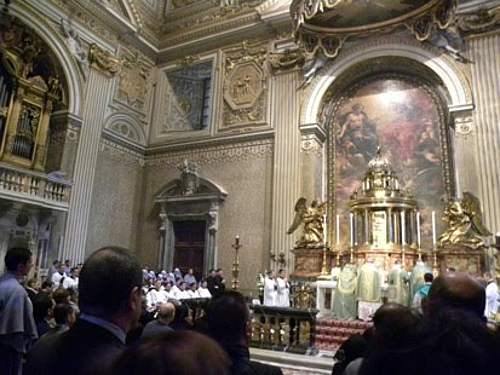Det nye personlaprelaturet for tidligere anglikanere kan få svært stor betydning
Dette skriver John Allen i dag – det kan bli en vei inn til Den katolske Kirke for inntil 80 millioner anglikanere:
In a move with potentially sweeping implications for relations between the Catholic church and some 80 million Anglicans worldwide, the Vatican has announced the creation of new ecclesiastical structures to absorb disaffected Anglicans wishing to become Catholics. The structures will allow those Anglicans to hold onto their distinctive spiritual practices, including the ordination of married former Anglican clergy as Catholic priests.
Those structures would be open to members of the Episcopal Church in the United States, the main American branch of the worldwide Anglican Communion. American Episcopalians are said to number some 2.2 million.
I en grundigere artikkel skriver Allen at dette svaret fra Vatikanet til spørsmålet fra TAC (Traditional Anglican Communion) var litt annerledes enn venta, siden det ikke bare svarer disse 400 000 anglikanerne, men egentlig alle anglikanere i verden:
The announcement came this morning in Rome in a news conference with two Americans: Cardinal William Levada, Prefect of the Congregation for the Doctrine of the Faith, and Archbishop Augustine Di Noia, Secretary of the Congregation for Divine Worship and the Discipline of the Sacraments.
Though the announcement did not single out any specific group of Anglicans, it responds to a request made two years ago by a breakaway group known as the “Traditional Anglican Communion,” a network claiming to represent some 400,000 Anglicans worldwide, including more than 5,000 in the United States, unhappy with liberalizing moves in the Anglican Communion, including the ordination of women as priests and bishops, the ordination of openly gay clergy and bishops, and the blessing of same-sex unions.
Rather than absorbing that bloc en masse, today’s move creates the possibility that bishops’ conferences around the world can create personal ordinariates, a special structure that’s tantamount to a non-territorial diocese, to accept Anglicans under the leadership of a former Anglican minister who would be designated a bishop.
According to a Vatican “note” released this morning, former Anglican clergy who are married may serve as priests in the new ordinariates, but they may not be ordained as bishops. Seminarians for the new ordinariates must be trained alongside other Catholic seminarians, though they may have separate houses of formation.
The details will be presented in a new apostolic constitution from Pope Benedict XVI, expected to be issued shortly. …


